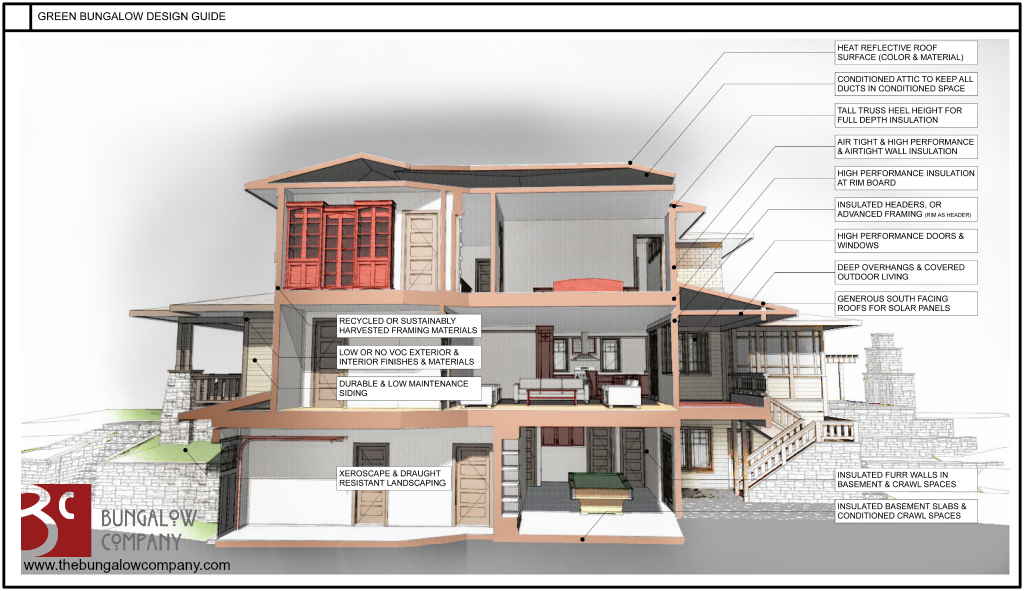Greening the Bungalow
Standing the Test of Time
Smaller residences require fewer resources to build, less energy to run, and work in harmony with the land; this ultimately creates a flexible housing stock that will grow with our culture and be a solid framework for future generations. Even the most well-intentioned or best constructed home, with the most efficient systems, and best solar orientation, still needs to work within the context of its surroundings in order to be a permanent thread of the urban fabric.
Home construction, in general, is not a green practice by nature and takes vast amounts of resources and energy to produce the most basic structure. If natural resources are going to be used, it is imperative that we make the best use of these materials. It has been proven that with sound construction methods and appropriate climatic detailing, the buildings are guaranteed to stand the test of time, as well as, the forces of nature. Buildings, as fluid structures, will evolve over generations, when properly maintained and by utilizing simple, indigenous and natural materials, will remain healthy as they respond to the local environment. If well-proportioned and sympathetically integrated in the land, the home will be readapted, not demolished, nor rebuilt in less than 30 years.
Integrity in Building Conservatively
Energy consumption has been on the rise as homes have increased in size and we have been inundated with countless energy consuming appliances and conveniences — meanwhile cost per barrel for oil has hit an all-time high. This along with America’s reliance on foreign oil has strained our position in the world and has threatened all remaining pristine natural habitats. With the greater access to alternative energy products, now is the time to conserve by taking stock in our own personal energy production.
Conservation is the most straightforward approach to reducing energy consumption, easily applied to every new home built today without having to retool or invest in complicated equipment. Smaller, well-insulated homes readily achieve this with proper orientation that harnesses the suns energy. Innovative principles in building become more achievable when land developers, city jurisdictions, and designers work together to plan communities where jobs are attainable to support the houses being produced, thus reducing single occupant car trips, and ultimately, dependency on fossil fuels. To bridge the environmental gap, fossil fuel should to be the alternative energy source, not the primary source.
A Conservative Approach to Neighborhood Planning
New urbanism is a powerful tool in planning new communities that are pedestrian friendly and are less reliant on car trips and fossil fuel consumption. By creating density to reduce urban sprawl, acute planners will plan communities that work with the solar orientation of the land. As solar energy establishes a foothold in the American energy market, innovative developers will mandate that all homes incorporate active and/or passive solar technology into their designs. By designing new homes to harness the sun’s energy, and to reduce energy consumption by building smaller and more efficiently, a trend will be set to conserve and will ultimately reduce America’s dependency on foreign energy.





I am now beginning construction on a bungalow in an historic neighborhood in Chattanooga, Tn using BuildBlocks, concserving 80% of my energy and helping eliminate the possibility of mold to which I am highly allergic. Keep you in touch with photos soon.
Louise Crowell
That’s great, Louise! Please do send photos, we’d love to see them.
Ms. Crowell,
My wife and I are similarly interested in constructing a custom ICF home in the northeast Georgia area. We would love to see photos of your design and construction progress! Sincerely.